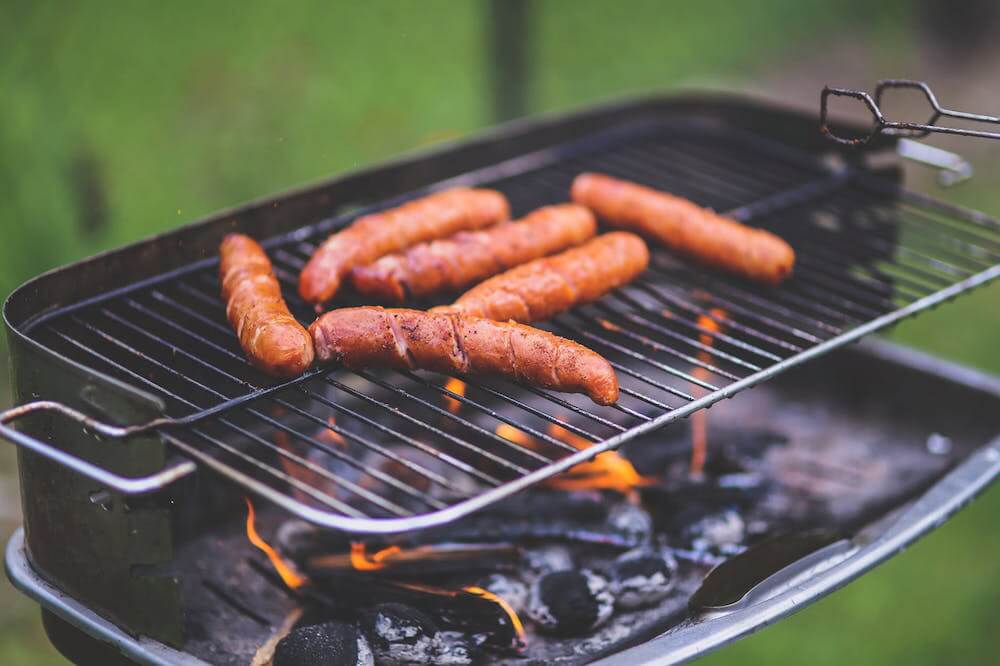Have you ever left a meal in the oven for too long or set the toaster too high? Maybe you’ve fried something in a pan and really fried it. Burning food is a common occurrence — but can these seemingly minor incidents put you at an increased risk of developing cancer?
Carcinogens in foods
Certain foods, when cooked at a high temperature, form natural chemicals that are classified as probable carcinogens, but studies suggest that these “likely” carcinogens are actually unlikely to cause the most common types of cancer.
The concern around burnt food increasing the risk of cancer relates to the chemicals that form when food is overcooked or burnt:
- Acrylamide
- Polycyclic aromatic hydrocarbons (PAHs)
- Heterocyclic amines (HCAs)
The two most prevalent food groups affected are starchy foods and meat.
Here’s a closer look at these chemicals and the level of risk they potentially impose:
Acrylamide
The chemical most commonly found in starchy foods is acrylamide. Acrylamide is a chemical found in a variety of places, including construction, cosmetics, and food packaging.
Acrylamide forms naturally from chemical reactions in certain types of starchy foods when they are cooked at a high temperature to the extent of turning dark brown. Some foods have a higher level of acrylamide, such as:
- French fries
- Potato chips
- Coffee
- Foods made from grains (breakfast cereals, cookies, and toast)
According to a study conducted by the World Cancer Research Fund, there is no strong evidence of a link between eating overcooked starchy food and increased cancer risk. In fact, coffee is listed as a food with acrylamide, but has been shown to reduce the risk of certain cancers.
PAHs and HCAs
When it comes to cooking meat, there are two different chemicals that occur when meat is cooked.
Polycyclic aromatic hydrocarbons (PAHs) are formed when fat and juices drip onto flames while frying, baking, or grilling meat. Heterocyclic amines (HCAs) are generated from reactions between molecules including amino acids and sugars.

HCAs form when meat is exposed to high temperatures for a prolonged period of time; the longer the exposure, the more HCAs are formed. Microwaving meat briefly before cooking at a high temperature reduces the time the meat needs to be cooked, and therefore less HCAs are produced. Although some studies how burnt, fried, or barbecued meat is associated with higher risk of certain cancers in lab tests, the connection between charred food and increased cancer risk is not proven for certain.
How can you cook food to avoid carcinogens?
Acrylamide
Although it is not yet clear if acrylamide in foods increases cancer risk, there are steps you can take to lower your exposure to the chemical. These include:
- Limit certain cooking methods such as frying and deep frying
- Soak raw potato slices in water and dab dry before frying or roasting
- Avoid storing potatoes in the refrigerator; this can result in increased acrylamide levels during cooking
HCAs and PAHs
There are also several ways to reduce HCA and PAH consumption when cooking meat:
- Avoid direct exposure of meat to an open flame and keep the duration of cooking times as brief as you can (especially at high temperatures)
- Microwave meat prior to cooking it on a high temperature, which can reduce HCA formation due to less time at a high heat
- Flip sides often when cooking
- Remove charred portions of meat before eating
- Refrain from using gravy made from meat drippings
- Use an acidic based vs. sugar-based marinade
- Enjoy grilling vegetables, tofu and other plant-based proteins or meat alternatives as these do not carry the same risk of formation of HCAs and PAHs as meat
“Boosting your intake of colorful fruits and vegetables is an excellent way to help eat a balanced diet and nourish your body with immune supportive nutrients,” says Kennedy.
Here are some recipes that are healthy choices for summer and/or grilling:
